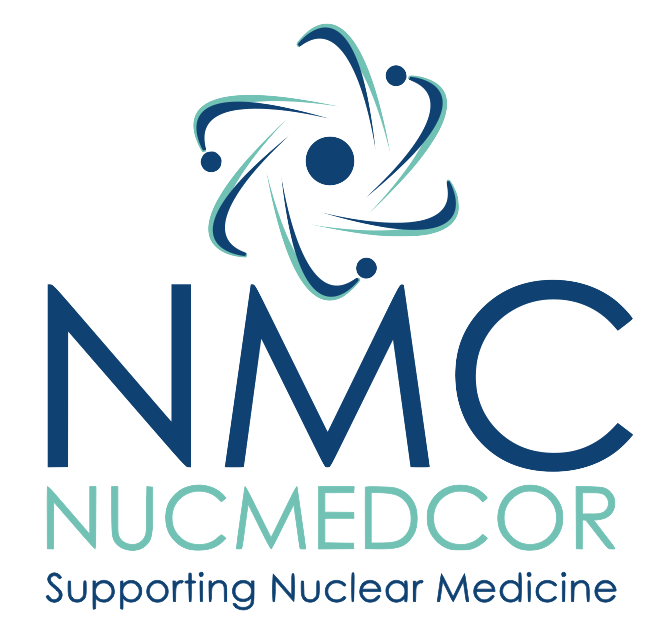- About NMC
-
Products
- Reagent Kits
- Ancillary Supply Sets
- Cassettes
- READI-CLING™ Cartridges
- FILL-EASE™ Vials, Stoppers and Seals
-
PET Chemicals
- Complexation Agents for [64Cu]-Labelling
- Complexation Agents for [68Ga]-Labelling
-
18F/11C Labelled Compounds
- ABP688
- ADIBO
- AMD
- beta-CFT
- beta-CIT
- Choline
- DAA1106
- DASB
- Fallypride
- FAZA
- FDG
- FDOPA
- FES
- FET
- FETA
- FHBG
- FLB457
- FLT
- Flumazenil
- Fluoro-2'-deoxyadenosine
- Fluoro-Altanserin
- Fluoro-Dopamine
- Fluoro-L-proline
- Fluoro-Setoperone
- FMAU
- FMISO
- FMT
- FPD
- Mefway
- MET
- ML-10
- MPPF
- NNC112
- MSTAT
- PBR06
- PBR111
- PBR28
- PIB
- PK11195
- Raclopride
- THK523
- T807
- WAY100635
- 18F Intermediates
- Oxygen-18 Water (O-18)
- Oxygen-18 Recycling
- SPECT Chemicals
-
Radiation Shielding
- PET
-
Technetium-99
- Dispensing Stations
- SECURE+™ Unit Dose Syringe Pigs
- Defender™ Dose Drawing Syringe Shields
- Latchkey™ Syringe Shields
- Lifetime™ Syringe Shields
- Safe Tview™ Syringe Shields
- SECURE® Syringe Shields
- EluTer Elution Vial Shields for Technelite® Generator
- Tungsten Magnetic Vial Shields
- R-Lead
- Hamilton Vial Heating Shield
- Iodine
- Misc/Other Products
- Resources
- About Us
- Contact Us
- What's New
- Search
Menu
- About NMC
-
Products
- Reagent Kits
- Ancillary Supply Sets
- Cassettes
- READI-CLING™ Cartridges
- FILL-EASE™ Vials, Stoppers and Seals
-
PET Chemicals
- Complexation Agents for [64Cu]-Labelling
- Complexation Agents for [68Ga]-Labelling
-
18F/11C Labelled Compounds
- ABP688
- ADIBO
- AMD
- beta-CFT
- beta-CIT
- Choline
- DAA1106
- DASB
- Fallypride
- FAZA
- FDG
- FDOPA
- FES
- FET
- FETA
- FHBG
- FLB457
- FLT
- Flumazenil
- Fluoro-2'-deoxyadenosine
- Fluoro-Altanserin
- Fluoro-Dopamine
- Fluoro-L-proline
- Fluoro-Setoperone
- FMAU
- FMISO
- FMT
- FPD
- Mefway
- MET
- ML-10
- MPPF
- NNC112
- MSTAT
- PBR06
- PBR111
- PBR28
- PIB
- PK11195
- Raclopride
- THK523
- T807
- WAY100635
- 18F Intermediates
- Oxygen-18 Water (O-18)
- Oxygen-18 Recycling
- SPECT Chemicals
-
Radiation Shielding
- PET
-
Technetium-99
- Dispensing Stations
- SECURE+™ Unit Dose Syringe Pigs
- Defender™ Dose Drawing Syringe Shields
- Latchkey™ Syringe Shields
- Lifetime™ Syringe Shields
- Safe Tview™ Syringe Shields
- SECURE® Syringe Shields
- EluTer Elution Vial Shields for Technelite® Generator
- Tungsten Magnetic Vial Shields
- R-Lead
- Hamilton Vial Heating Shield
- Iodine
- Misc/Other Products
- Contact Us
- Home /
- Products /
- PET Chemicals /
- 18F/11C Labelled Compounds /
- FHBG /
- FHBG (50 mg)
Copyright © 2025 NUCMEDCOR. All rights reserved.
Powered by nopCommerce



